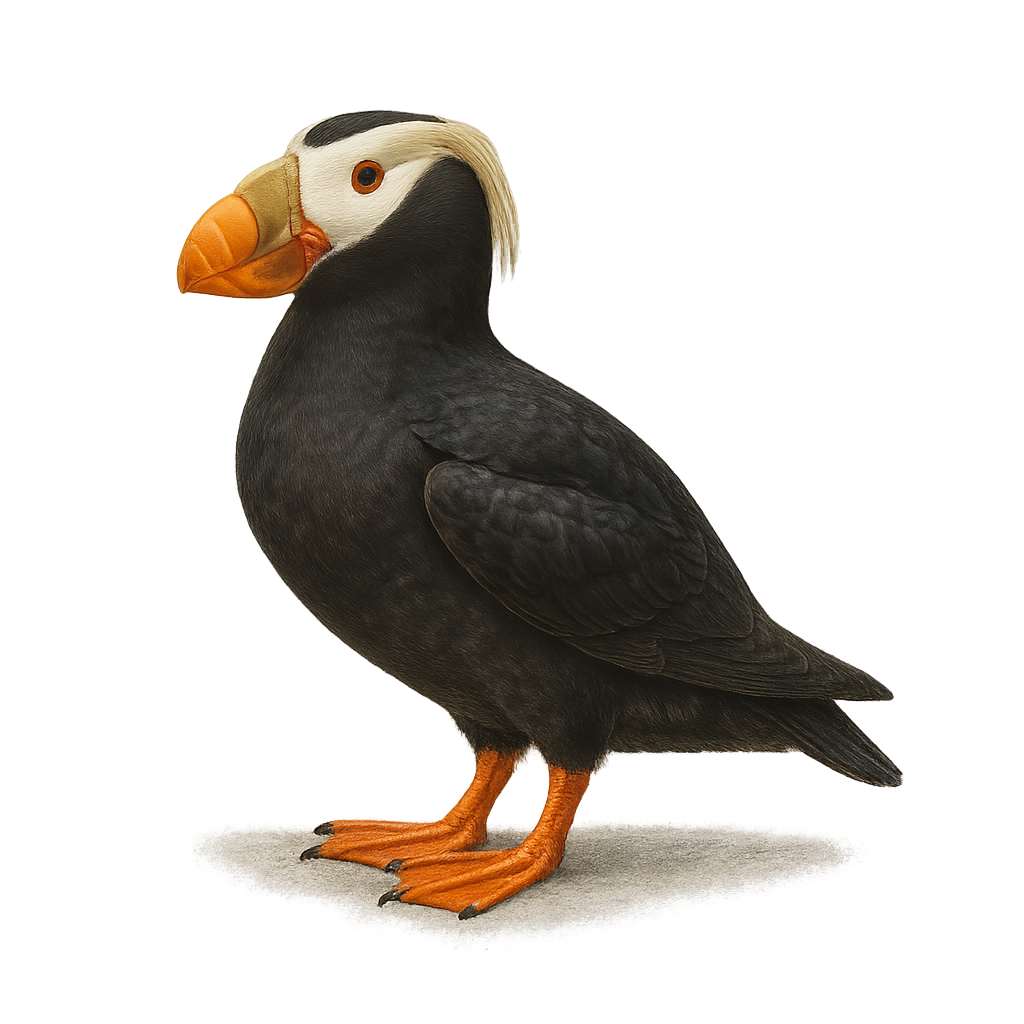Your wildlife photography guide.
Explore the tufted puffin in detail, study its behavior, prepare your shots.
Where to observe and photograph the tufted puffin in the wild
Learn where and when to spot the tufted puffin in the wild, how to identify the species based on distinctive features, and what natural environments it inhabits. The WildlifePhotographer app offers tailored photography tips that reflect the tufted puffin’s behavior, helping you capture better wildlife images. Explore the full species profile for key information including description, habitat, active periods, and approach techniques.
Tufted Puffin
Scientific name: Fratercula cirrhata

IUCN Status: Least Concern
Family: ALCIDAE
Group: Birds
Sensitivity to human approach: Suspicious
Minimum approach distance: 10 m
Courtship display: May to July
Incubation: 40-43 jours
Hatchings: June to August
Habitat:
Rocky cliffs, coastal islands, open seas
Activity period :
Primarily active during the day, with peak activity in the morning and late afternoon.
Identification and description:
The Tufted Puffin, Fratercula cirrhata, is a striking seabird known for its contrasting black and white plumage and golden tufts during the breeding season. Found primarily in the North Pacific, it nests on steep cliffs of islands and rocky coasts. This puffin is distinguished by its broad, colorful bill, which becomes particularly vibrant during breeding. It feeds mainly on fish and small marine invertebrates, diving skillfully underwater to catch its prey. Although often solitary at sea, it gathers in dense colonies to nest. Its ability to fly swiftly and dive deeply makes it an efficient hunter.
Recommended lens:
400mm – adjust based on distance, desired framing (portrait or habitat), and approach conditions.
Photography tips:
To photograph the Tufted Puffin, aim for the golden hours of morning or evening to benefit from soft light that highlights the details of its plumage and vibrant colors. Use a telephoto lens of at least 400mm to capture sharp images from a distance without disturbing the bird. Focus on in-flight shots to showcase its elegant silhouette and hunting behaviors. Be patient and wait for the bird to land or dive to capture dynamic and interesting shots.
The WildlifePhotographer App is coming soon!
Be the first to explore the best nature spots, track rutting seasons, log your observations, and observe more wildlife.
Already 1 439 wildlife lovers subscribed worldwide

